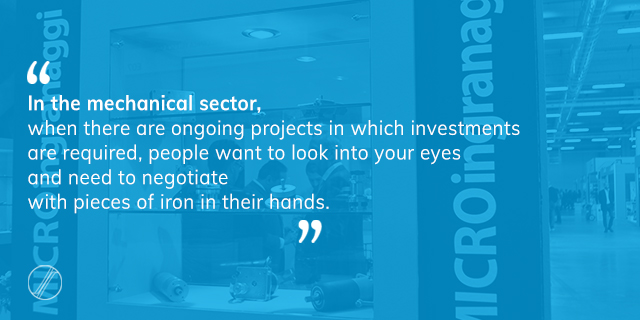If I produce several pieces of what the customer ordered from me but in the production process I don’t have any waste or discarded items, I end up with more pieces than those required and most likely I won’t be able to sell them. At the same time, however, arriving at the end of the production chain with a negative forces me to produce the missing components to reach the exact number required and this will have a cost that is way too high. So what’s the right balance?
What is the correct production margin to keep? This is one of the many problems which weigh heavily on the shoulders of manufacturers of mechanical components or of any type or nature.
In the case of MICROingranaggi for example, the criticality is added (quite typical of our specialization) of dealing with items of fairly small dimensions and managing the flow from start to finish of the production chain can become complex. The initial batch could for example be a thousand pieces but become 900 at the end of the process as some of the items have been lost inside the machinery and the cost of the operator interrupting their work to go and look for them is generally greater than that of the item itself (which is why it is advisable to proceed with one piece less). Or there may be processes for which it is the set-ups of the machines that create waste or, even still, the pieces used for testing and measuring end up being no longer reusable. Whatever the reason, however, the risk is of also reaching the end of the chain with several fewer pieces and therefore with a lower number with respect to what was ordered by the customer.
To calculate the correct production margin requires that each stage of the production process runs efficiently.
Through a study of workflows, for example, we realized that certain stages of the production processes of MICROingranaggi could be further improved, which resulted in us inserting a weighing system concomitant also to the washing phase in order to relieve the warehouse of some of the work, and at the same time, to reduce the risk of error, speeding up production. Simply adding a counting operation in the actual production process allows us in fact to become aware in advance of any excessive waste, and to intervene before the machine involved in the processing that has just ended is set up for subsequent different operations.
The fundamental role played by the warehouse and by those who work inside it should also not be underestimated.
Managing a warehouse containing thousands of articles should never be considered secondary to the other activities, despite not being a production department. It is in fact a very critical activity in which, directly or indirectly, almost the entire company is involved, and which impacts on the operation of the various departments. A mistake made by the warehouse division may in fact end up affecting the entire production chain.
Warehouse negative organization consumes hours and hours of work every day. Often the tendency of smaller enterprises is to delegate the warehouse activities to almost anyone. As in fact it is not one of the activities closely related to business generation, it is sometimes mistakenly overlooked, which – in the long run – can result in losses both in terms of a financial nature and in work hours employed. Automatic warehouses are highly effective solutions but require fairly significant investments. Opting for an automatic warehouse is therefore only beneficial when a company exceeds a certain threshold of pieces moved.






